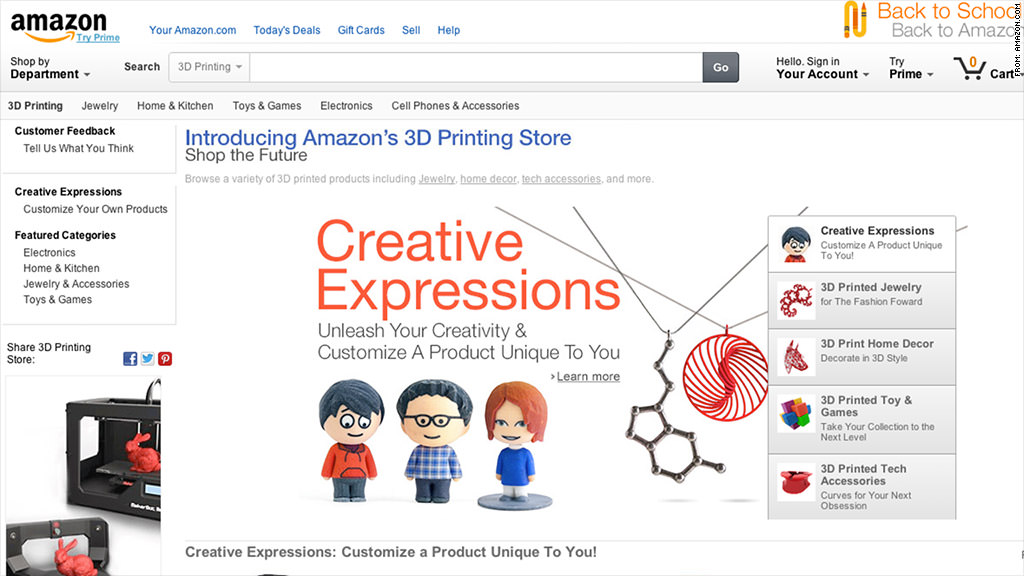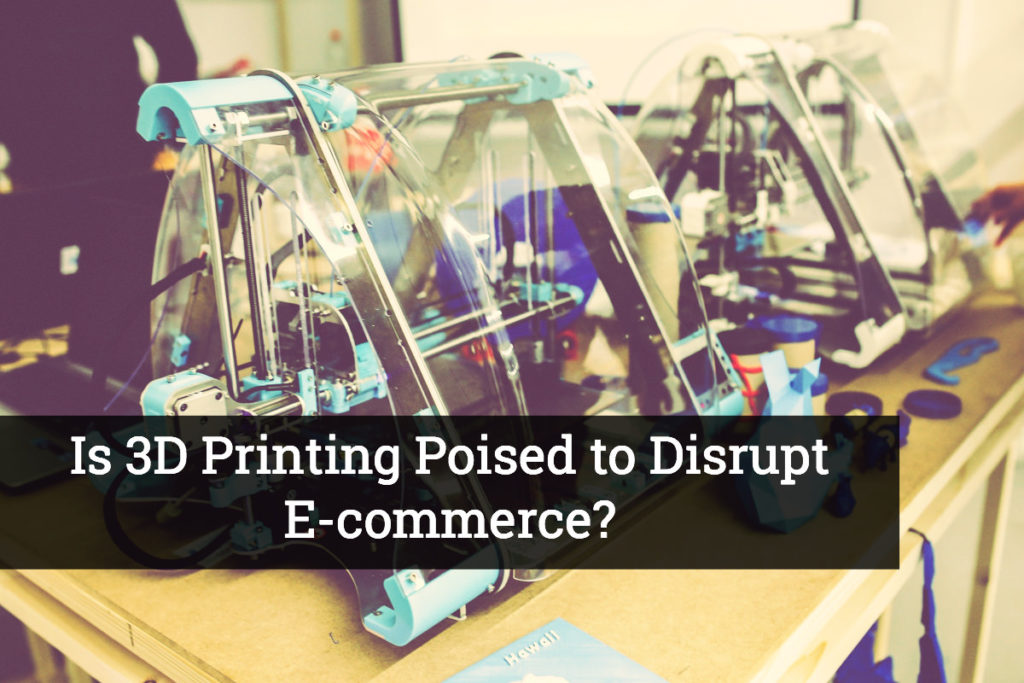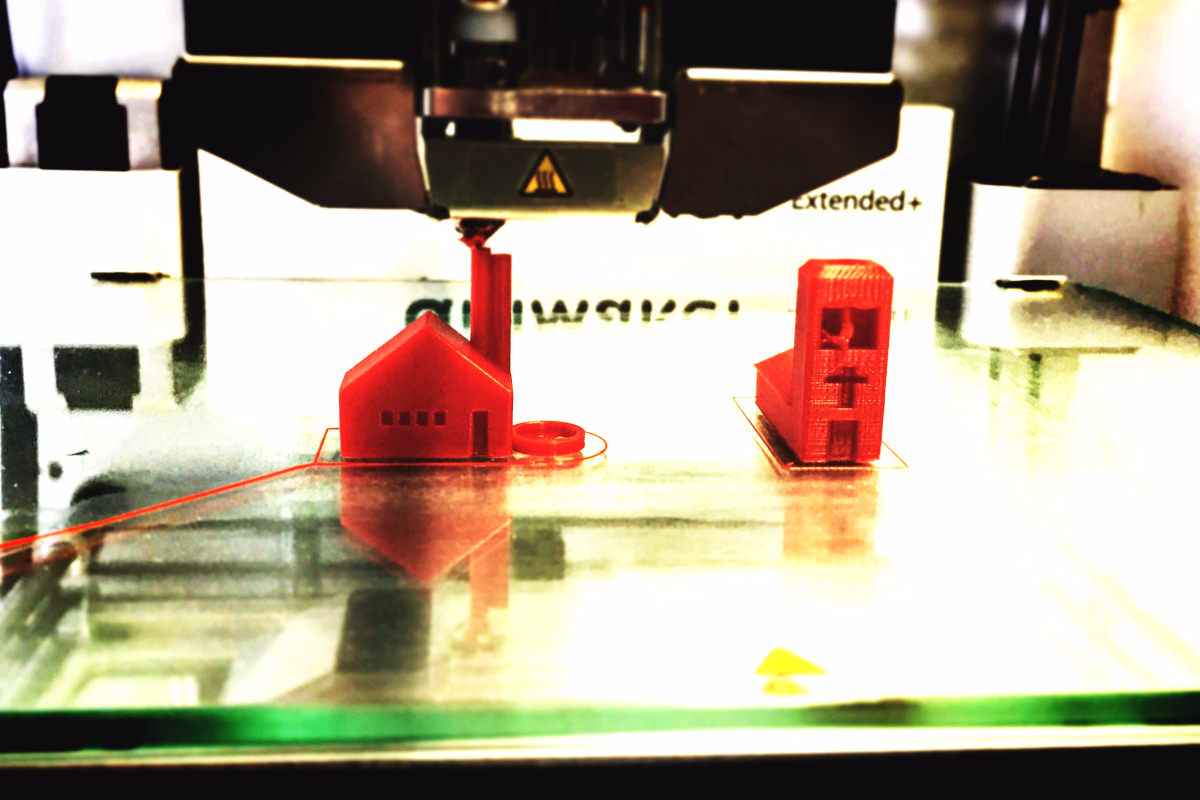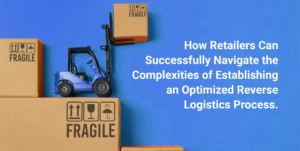3D printing is an innovative technology used to create detailed and accurate three-dimensional objects from digital 3D models.
Nowadays, nearly anyone can find a use for a 3D printer and it has been used for everything from product development prototypes to fashion design, architectural modeling, medical procedures and more.
The 3D printing technology has improved dramatically in recent years, and the cost of using it at home and in a commercial capacity has declined. Because of these two factors, some business professionals worry that e-commerce will falter. After all, consumers who have access to this technology at home could simply print their own items through their 3D printer rather than ordering them online.
Below, you’ll discover the potential advantages and disadvantages of 3D printing in the e-commerce sector.
The rise and fall of Amazon’s 3D printing store
Even though consumer-based 3D printing may seem rather new, Amazon actually launched a 3D printing store back in 2014. While Amazon did not print the products itself, it served as a go-between that sold 3D printing services from companies such as Sculpteo, 3DLT and Mixee Labs.
Despite connecting with exceptional 3D printing companies, the Amazon 3D printing store was ultimately a failure. Amazon shut this feature down in late 2015 because of a lack of demand.
One of the positive aspects of Amazon’s 3D printing store was that it offered customization and personalization for more than 200 products. Nowadays, personalization is limited to product recommendations based on customers’ preferences.
By offering their customers the possibility to design and purchase their own personalized products, Amazon tapped into the trend for customized, unique products.

Amazon’s love for 3D technology was proved once again when it recently acquired 3D body scanning company Body Labs in an effort to take customization to the next level. Thanks to 3D technology, in the near future customers might be able to buy clothes on Amazon that are a perfect fit.
Potential advantages
Any business that focuses on direct sales needs to maintain enough stock to meet demand without creating a large surplus that depletes capital. After all, inventory that does not move quickly is simply a non-liquid asset.
Since most items are usually purchased in several colors and styles, this adds to the drain on resources because you must store a larger number of items. The innovation of 3D printing, however, can reduce or even eliminate the need for a retailer to purchase a surplus of stock, which costs money in the form of inventory, shipping and storage.
Through 3D printing, companies can produce their own products on demand, and these items may even be customized for further customer satisfaction because they are not produced until the customer orders them. Overhead would drop because you will not need to store a surplus, and the company could pass on some of the savings to customers and retain some savings as a profit.
There will be no need to guess how many small red widgets are needed in the storage warehouse versus how many large blue widgets could be stored. Even if 3D printing only applies to a small portion of your total operation, the impact to e-commerce could be tremendous and beneficial.
Some customers may want to print their own products at home to avoid any shipping delays and costs. Retailers could use this as an opportunity to sell the files that contain printing instructions to the consumer. This would enable customers to take direct advantage of time and cost savings through this technology, and at the same time dramatically reduce overhead for retailers without impacting profitability.
In fact, any middlemen that are currently used in the production pipeline can be entirely eliminated, creating a much more efficient and direct production and sales process.
 Potential threats
Potential threats
As beneficial as 3D printing can be for the e-commerce industry, there are some potential threats that companies need to be aware of as the interest in this technology grows.
For example, there are currently many products that consumers can print at home through a 3D printer, and the list of products may increase substantially in the years to come. This begs the question of what will happen to e-commerce companies if they print their own products and do not need to purchase them.
More than that, other industries may also be negatively affected. For example, production companies, suppliers and even shipping companies like FedEx and UPS may suffer as a result if they are no longer involved in the e-commerce logistical process. Many service providers and suppliers are cut out of the sales process, and this could have a seriously detrimental impact on the economy.
The good news is that 3D printers are not yet able to match the quality and detail associated with the products that are manufactured using traditional methods. In addition, commercial-grade 3D printing that can produce the finishes and detailed results that consumers want may not be affordable for consumers to use at home for many additional years.
At the present time, consumers that demand high-quality products with excellent finishes will continue to buy them through e-commerce companies. However, as 3D printing technology improves over time, it may become a future threat.
Conclusion
As is the case with any new technology, there will be benefits and drawbacks associated with the widespread use of 3D printing.
There will also be growing pains as companies and consumers become accustomed to using this technology and as it evolves and becomes more refined. At the moment, however, the most substantial benefits associated with 3D printing are for creating customized products.
3D printing can help reduce overhead for e-commerce companies because there is no need to store products. More than that, it can eliminate the need to manufacture products through a third-party or foreign manufacturing firm.
With this in mind, companies should keep a close eye on this technology and actively look for ways to incorporate it into their operations.
Find out how to Automate your Amazon Order Fulfillment process with the Amazon + Floship Integration here!
Ashley Wilson is a freelance writer interested in business, marketing, and tech topics. She has been known to reference Harry Potter quotes in casual conversation and enjoys baking homemade treats for her husband and their two felines, Lady and Gaga.
You can reach Ashley on Twitter @ashleygwilson.

Ready To Upgrade Your Logistic Solution?
Speak to Floship ecommerce logistic consultant about improving your global support chain today






